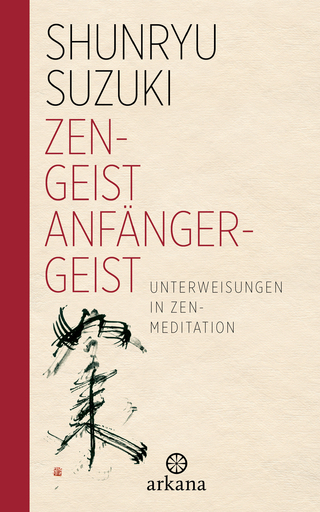
The Brahma’s Net Sutra
Seiten
2018
Numata Center for Buddhist Translation & Research. (Verlag)
978-1-886439-65-8 (ISBN)
Numata Center for Buddhist Translation & Research. (Verlag)
978-1-886439-65-8 (ISBN)
The Brahma's Net Sutra plays an important niche role in the development of East Asian Mahayana Buddhism. It is the primary extant Vinaya text that articulates the precepts from a Mahayana perspective. That is, it takes its main audience to be “bodhisattva practitioners”, mainly householders who remain engaged with society rather than becoming renunciant monks or nuns.
The Brahma’s Net Sutra plays an important niche role in the development of East Asian Mahayana Buddhism. It is the primary extant Vinaya text that articulates the precepts from a Mahayana perspective. That is, it takes its main audience to be “bodhisattva practitioners,” mainly householders who remain engaged with society rather than becoming renunciant monks or nuns.
The Vinayas, and especially the discourse in this sutra, show monastic and lay Buddhist practitioners engaged at every level of society, from top to bottom. Buddhist practitioners were involved in military affairs, political intrigues, matchmaking, and every other sort of “mundane” social activity. The Vinaya texts reveal how the Buddhist community in its time judged and dealt with such matters.
The Brahma’s Net Sutra was written in two fascicles, each radically different in structure, content, theme, grammar, etc., from the other. The first fascicle discusses the forty Mahayana stages: the ten departures toward the destination, the ten nourishing states of mind, the ten adamantine states of mind, and the ten bodhisattva grounds. The second fascicle explains the ten grave precepts and the forty-eight minor precepts. These came to be referred to as the “bodhisattva precepts,” the “great Brahma’s Net precepts,” the “buddha precepts,” and so forth. The second fascicle has been especially esteemed, studied, and circulated separately for more than a millennium as the scriptural authority for the Mahayana bodhisattva precepts. [Adapted from the Translators' Introduction.]
The Brahma’s Net Sutra plays an important niche role in the development of East Asian Mahayana Buddhism. It is the primary extant Vinaya text that articulates the precepts from a Mahayana perspective. That is, it takes its main audience to be “bodhisattva practitioners,” mainly householders who remain engaged with society rather than becoming renunciant monks or nuns.
The Vinayas, and especially the discourse in this sutra, show monastic and lay Buddhist practitioners engaged at every level of society, from top to bottom. Buddhist practitioners were involved in military affairs, political intrigues, matchmaking, and every other sort of “mundane” social activity. The Vinaya texts reveal how the Buddhist community in its time judged and dealt with such matters.
The Brahma’s Net Sutra was written in two fascicles, each radically different in structure, content, theme, grammar, etc., from the other. The first fascicle discusses the forty Mahayana stages: the ten departures toward the destination, the ten nourishing states of mind, the ten adamantine states of mind, and the ten bodhisattva grounds. The second fascicle explains the ten grave precepts and the forty-eight minor precepts. These came to be referred to as the “bodhisattva precepts,” the “great Brahma’s Net precepts,” the “buddha precepts,” and so forth. The second fascicle has been especially esteemed, studied, and circulated separately for more than a millennium as the scriptural authority for the Mahayana bodhisattva precepts. [Adapted from the Translators' Introduction.]
A. Charles Muller is professor in the Graduate School of Humanities and Sociology at the University of Tokyo. His main work lies in the fields of Korean Buddhism, East Asian Yog?c?ra, East Asian classical lexicography, and online scholarly resource development. Kenneth K. Tanaka is a professor of Buddhism at Musashino University in Tokyo, Japan, and is an ordained Jodo Shinshu priest. His work includes books and articles in the fields of Pure Land Buddhism and the development of Buddhism in the United States.
| Erscheinungsdatum | 03.08.2018 |
|---|---|
| Übersetzer | A. Charles Muller, Kenneth K. Tanaka |
| Verlagsort | Berkeley |
| Sprache | englisch |
| Maße | 165 x 241 mm |
| Themenwelt | Geisteswissenschaften ► Religion / Theologie ► Buddhismus |
| ISBN-10 | 1-886439-65-6 / 1886439656 |
| ISBN-13 | 978-1-886439-65-8 / 9781886439658 |
| Zustand | Neuware |
| Haben Sie eine Frage zum Produkt? |
Mehr entdecken
aus dem Bereich
aus dem Bereich
Philosophische Betrachtungen
Buch | Softcover (2024)
Aufbau TB (Verlag)
12,00 €
Unterweisungen in Zen-Meditation
Buch | Hardcover (2024)
Arkana (Verlag)
20,00 €


